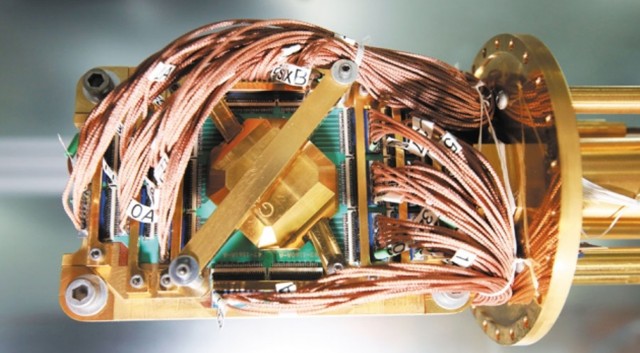Despite the fact that the main advantages of the blockchain are security, immutability and protection against hacker attacks, networks of the distributed registry can be easily decoded with a powerful quantum computer. Quantum computers can destroy the cryptography of public keys and codes that support blockchain networks.
It is known that the method of functioning of a quantum computer differs from the operation of a classical computer. In conventional computers, information is stored and transmitted in bits (particles of information) that can exist in one of two states — 1 or 0. Quantum computers use qubits — combinations of bits multiplied by complex numbers that can exist in two states simultaneously. This allows quantum systems to perform any calculations many times faster and provides them with significant advantages when performing complex tasks, such as creating artificial intelligence, modeling chemical interactions and … destroying the widely used public-key cryptography now. Therefore, a quantum computer can put blockchain technology at serious risk and ultimately even destroy the blockchain code.
“The emergence of quantum computers jeopardizes the security of any public-key cryptographic systems,” explains Alexander Lvovsky, a professor at Oxford University and a member of the scientific council of the Russian Quantum Center, “The technology of the blockchain is particularly at risk because the operations are completely anonymous.”

The public (public) key encryption algorithms use the so-called one-way (irreversible) functions, allowing to encode information in such a way that only the owner can decrypt it. In order to hack a computer and find the inverse of the function, the hacker will need about a year, while a quantum computer is able to do it in a matter of seconds.
Thus, an attacker with access to a quantum computer can use the Schnorr algorithm to forge a digital signature, impersonate the user and take possession of its digital assets.
That is, in fact, irreversible functions are the only line of protection for blockchain networks, since the only type of protection for a user is his digital signature.
Sure, quantum computers are still at an early stage of development. Nevertheless, you need to be ready for everything, because there is always a chance that events will start to develop faster.
IBM Research Vice President Robert Sutor (Robert Sutor), who is responsible for the quantum computer research program at the company, believes that it is already necessary to look for measures to protect against quantum computers and to develop and implement algorithms that are resistant to quantum attacks.
Currently, some specialists are already working on post-quantum security algorithms, which are one-way algorithms that are difficult to compute using traditional and quantum computers. However, in the future, new generation encryption technologies will be needed. For example, some scientists suggest adding quantum cryptography to the blockchain or even making the whole blockchain quantum for this purpose.
